As a radio amateur, ham, it seems we are a motley bunch of people with many side interests. A number of years ago I was on a photography forum with a particular interest in medium format cameras with traditional 120 film and also the occasional large format with 4×5 inch sheet film. At one point someone accidentally finished with their ham callsign causing everyone else to do the same! It turned out that most of the people on the forum were also radio amateurs. After a short visit in “radio talk and dx”-land, however, the forum returned to dealing with photography and film processing again.
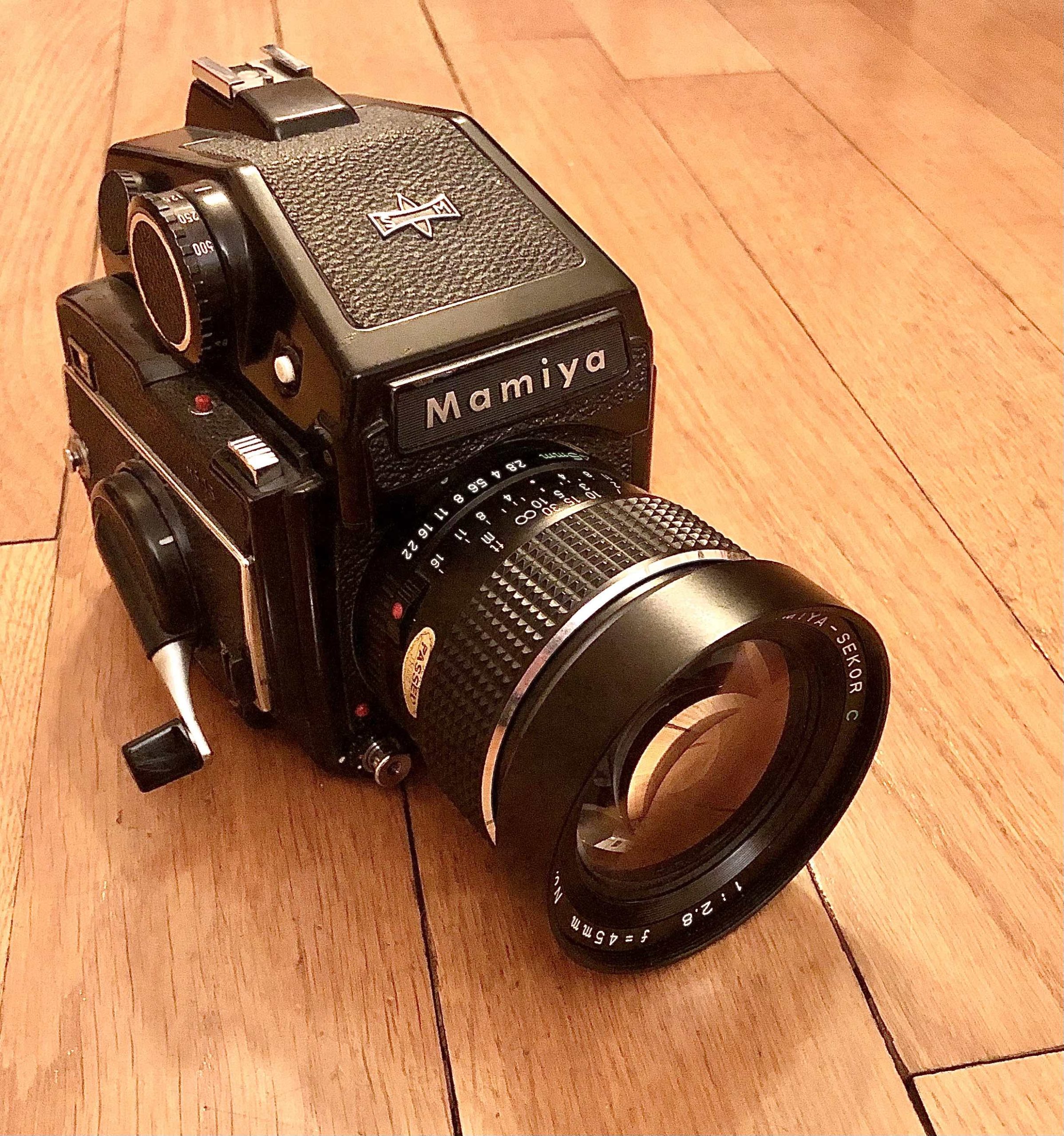
“Analogue” film shooters still exist and I have to admit that as more time goes by, the more retro I have become: Homebrew beer is in pressure kegs, and last year I also returned to traditional shaving with safety blades and a German Merkur razor. Slowly I have become a hipster apparently:)
The latest chapter in that “development” is celestial navigation. It all started innocently with the fact that we bought a summer cottage by Lake Vättern and with it came a 5 m long sailboat, a Crescent Skipper if anyone remembers that one. A chart later and thoughts of navigation appeared. My father took an evening course in 1972 in this and there has been an Ebbco plastic sextant at home ever since. However, it turned out that the Ebbco’s solar filters did not age well but were completely impenetrable for sun light. I tried mounting black negative film in the holders but the graininess of the negative was too coarse so that didn’t turn out well either.
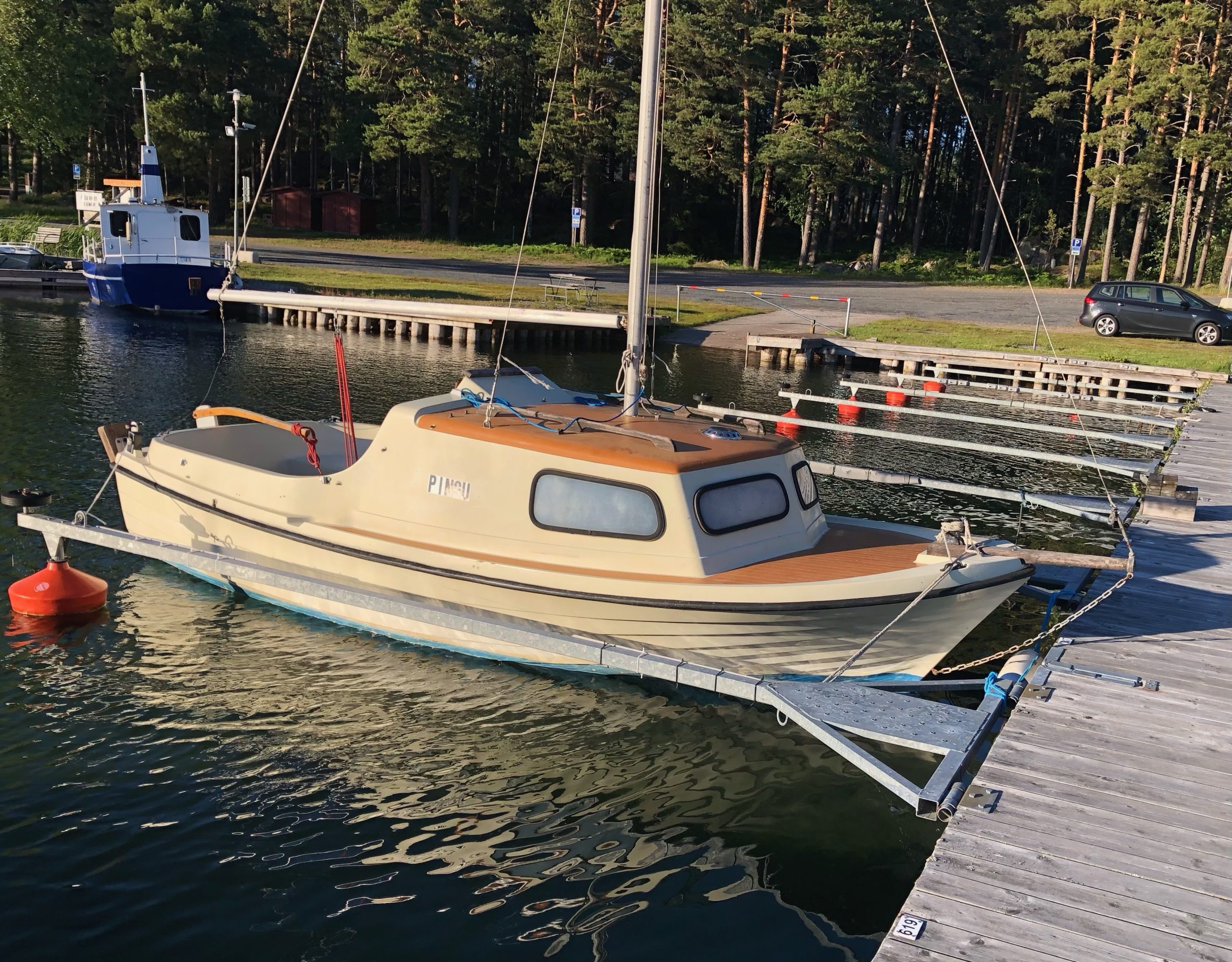
What to do? Out on the net, of course, and after a while I found an East German Trommel sextant, made by Freiberg, for a relative bargain. On delivery it turned out that the micrometer screw had pitched together after all these years, it was manufactured in 1967. It did not budge! As I am used to disassembling old cameras this was not a real problem and I had the opportunity to take apart the entire mechanism, troubleshoot and see what it looks like inside. Mechanical solutions are fun to study and with well-cleaned bearings and new grease on the surfaces it was as good as new.
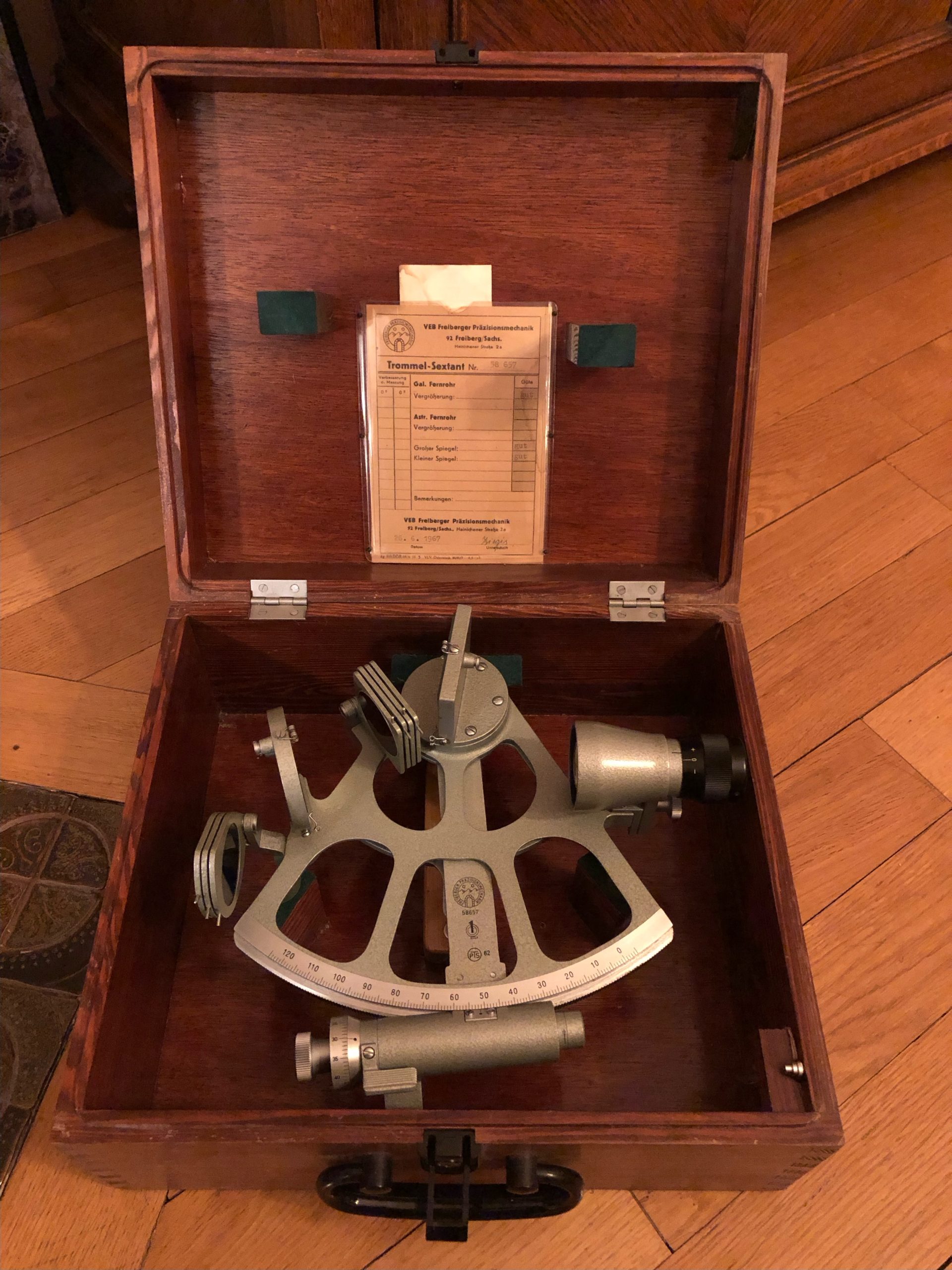
What makes this called Trommelsextant/Drumsextant is that the mechanism is hidden in a metal cylinder:
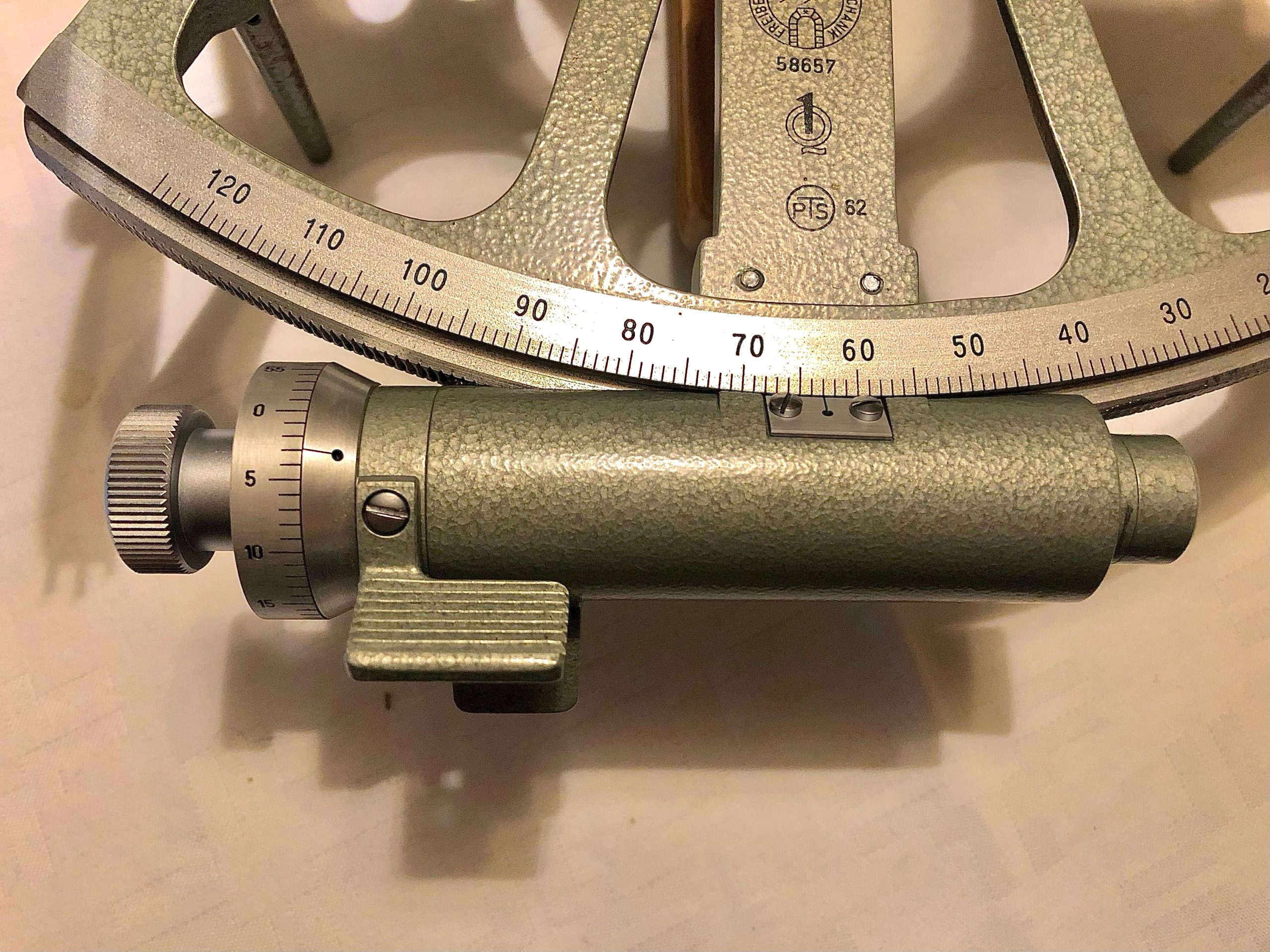
On several occasions I then took solar altitudes at home with the sextant and an artificial horizon. It is noticeable that exercise is needed, the spread in the measurements became smaller after a while.
In absence of horizon, one can use a water surface in a container and measure the angle between the sun and its reflexion in the water surface (measured angle is twice actual altitude). For a calm water surface, two glass plates are placed at right angles as a windbreak. The Davis artificial horizon comes conveniently placed in a small transport box that also forms the water container itself:
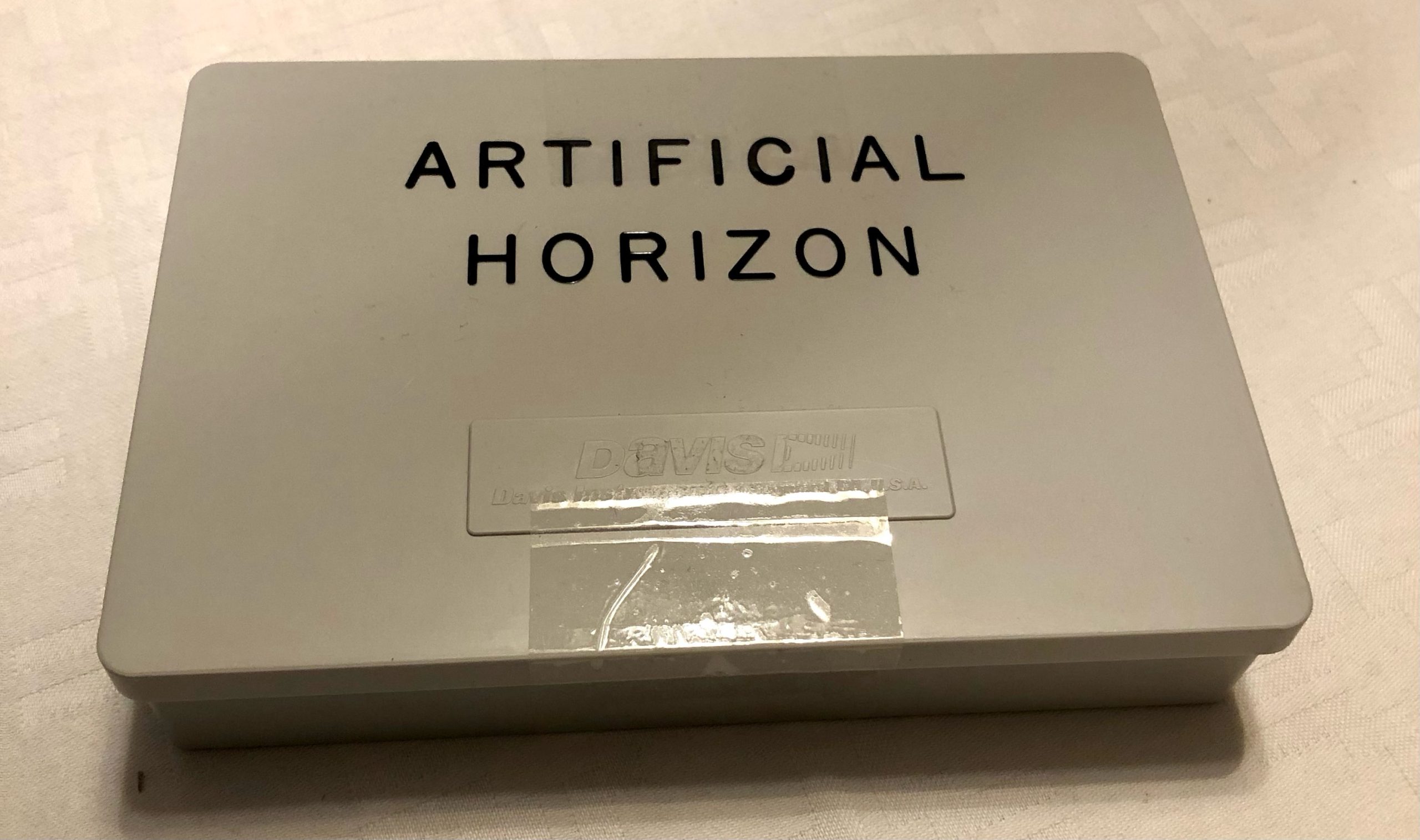
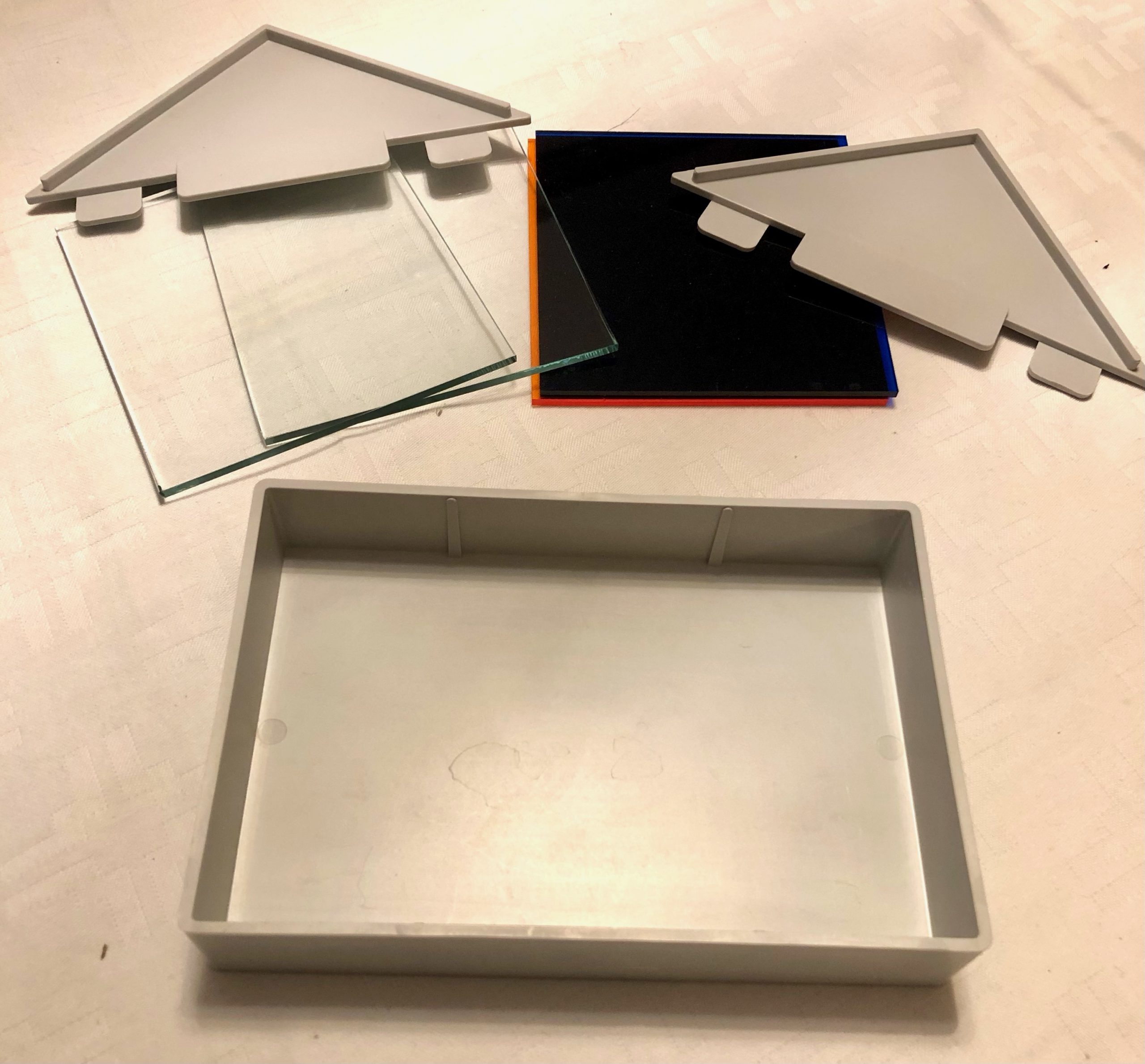
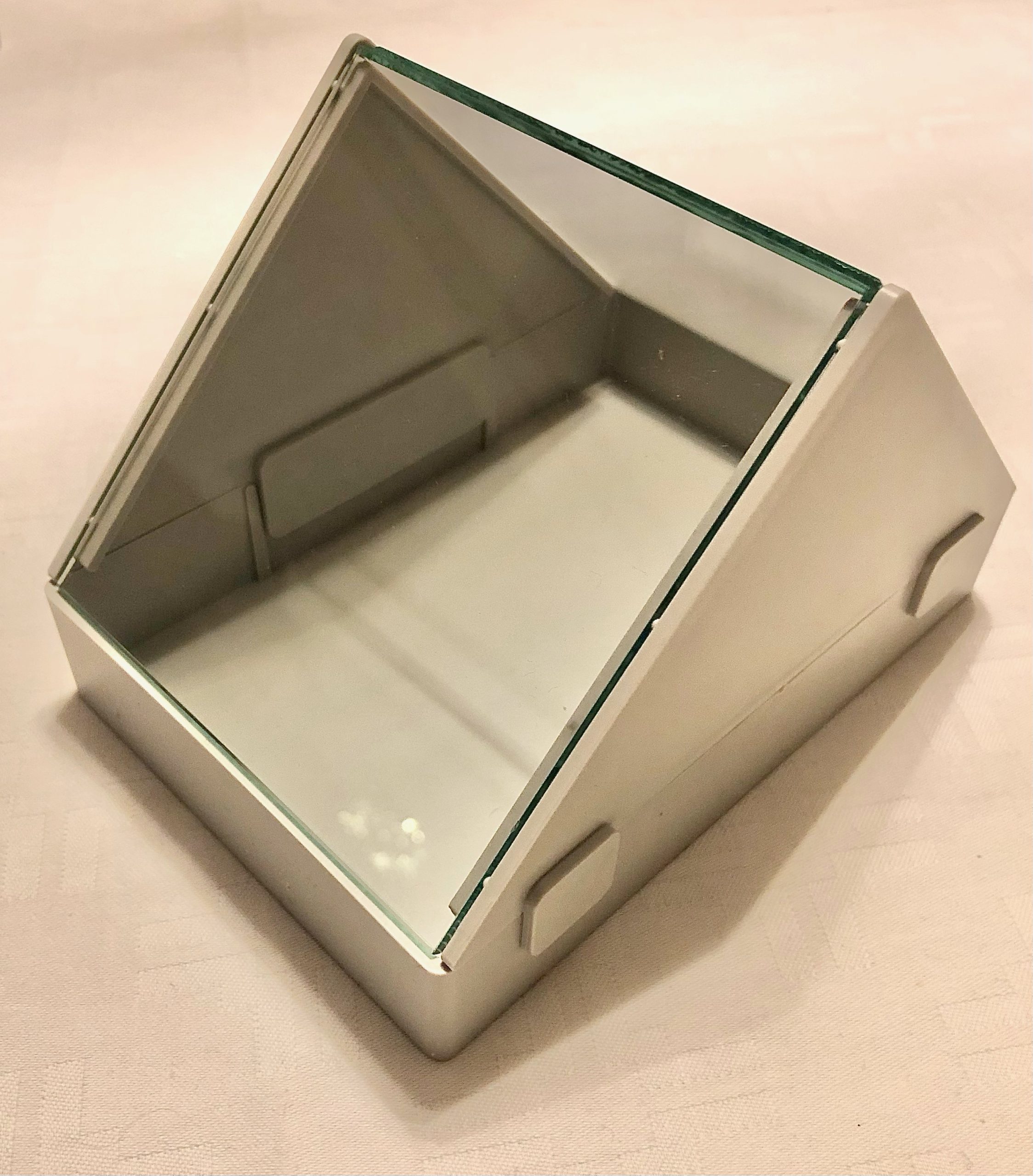
During the late summer I could then play skipper in the garden. After calculations, I was able to state that the garden here at home is quite firmly anchored on the map. Very comforting!
Since then I have “shot” the Sun, Moon, Jupiter, Venus, Sirius, Capella and several other heavenly objects, bought a Nautical Almanac and learned how to use the old tables HO-214 for positioning by hand. In fact there is a renewed interest in astronomy which is quite fun. Strangely enough I feel no urge to seriously combine photography and astronomy, they are separate entities.
(FYI: The Davis artificial horizon is usable above circa 20˚ (40˚ after reflexion). So in the winter when the sun is low a bubble sextant, with an internal spirit level, comes to the rescue.)



